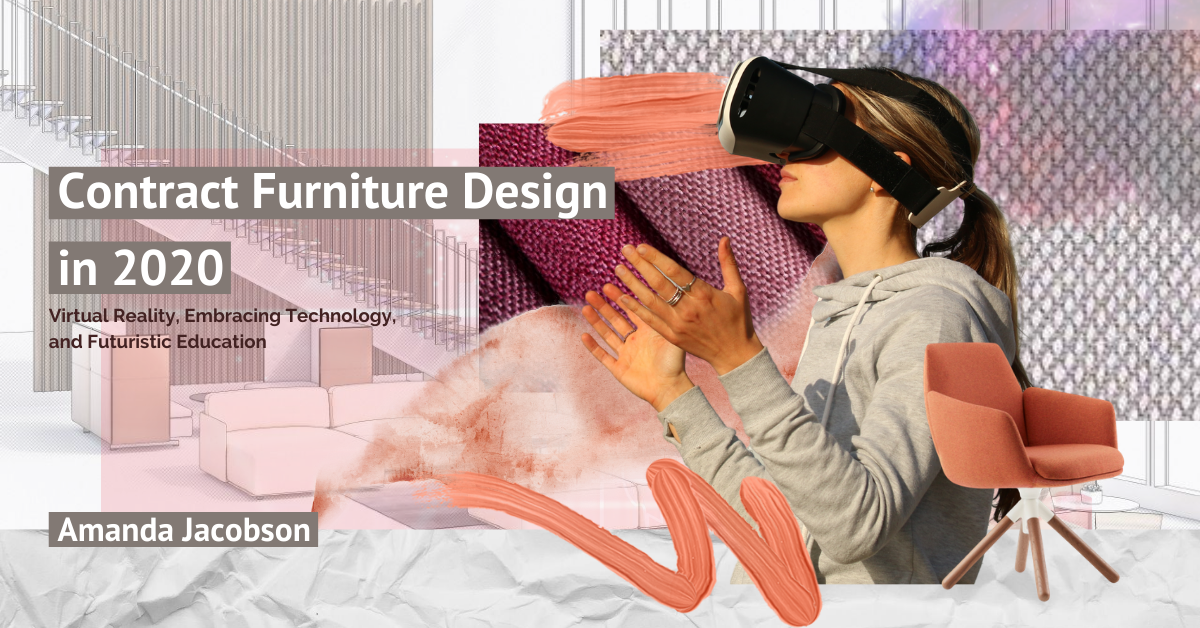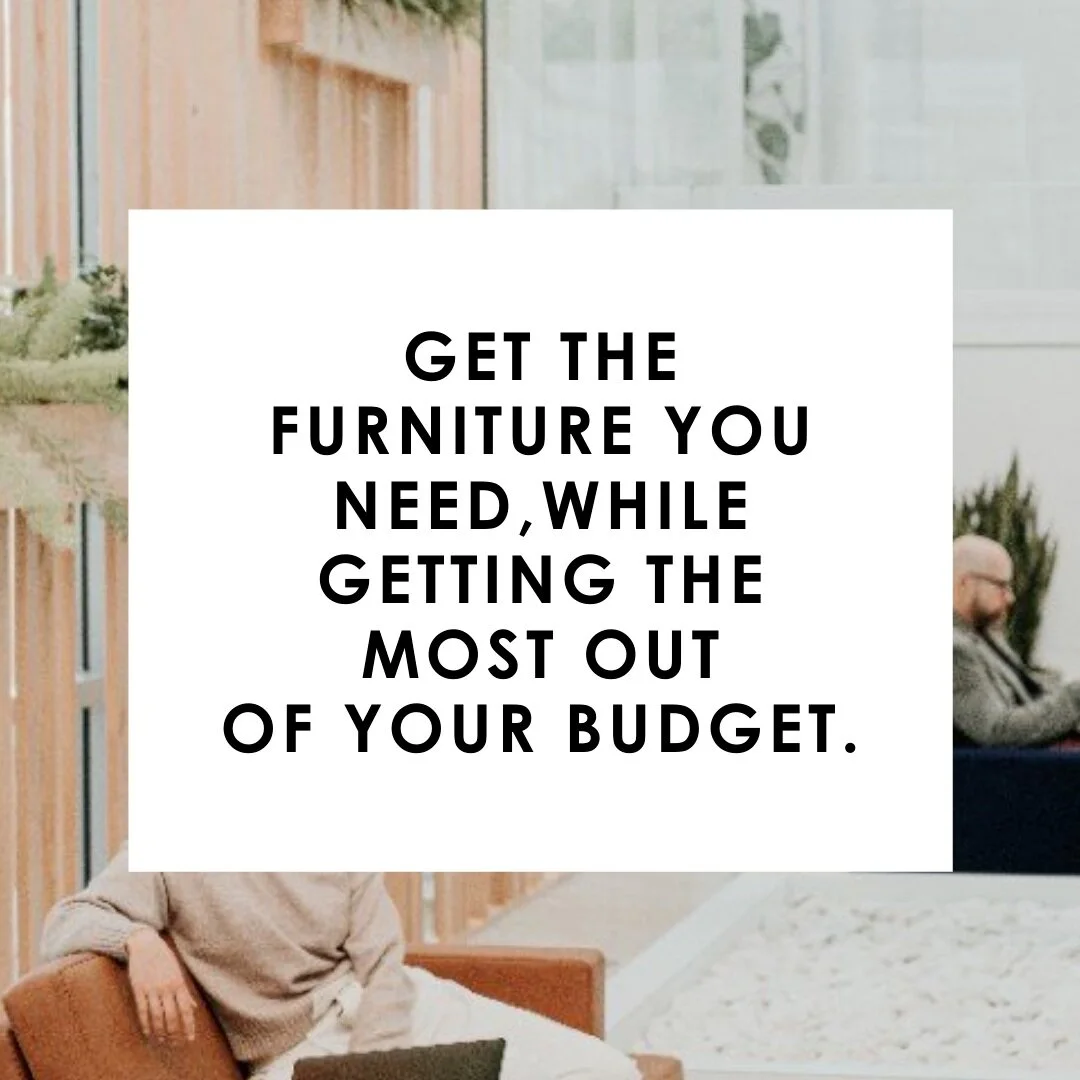Contract Furniture Design in 2020
During a recent company meeting, our TBI owner and boss reiterated how far technology has come in the last 20 years. When he first started at this company, he had to convince his boss that an email address was necessary! As we all know and feel, email and mobile devices are simply a necessary part of how we communicate. So, imagine for a second, what it might be like in 20 more years! We don't know exactly what that will be, but we know the direction we are heading.
As a designer in the contract furniture industry, I feel the cutting edge of technology includes mediums such as AR/VR, AI, and immersive experiences. Design is simply another language used to communicate how an object or subject looks, feels, and functions. How might those mediums help advance the way we communicate design to our clients? Imagine walking through a space before any material has been erected. Imagine being able to see what the lighting will look like during the day, and at night, within minutes of each other. Imagine being able to see the space occupied by its intended users and how it will be used. It may seem a little far-fetched now, but it’s inevitable. These are the demands we see from our clients, and technology is allowing us to get closer in meeting those requests. At TBI INC, we believe these tech mediums will be EXPECTED by our clients in the near future.
Our firm is often categorized as a furniture company, understandably. We want to clarify to our customer base that we are a company invested in technology. We are a Technology Information company who happens to specialize in commercial furniture. TBI INC looks forward to the next thing that will allow us and our clients to communicate more fluidly. We believe the next thing is immersion in AR and VR. We are exploring options, such as Yulio, to expand our communication skillsets.
With a little insight from our IT guru, Tinker (yes, that is his real last name), another technology solution is AI. AI is becoming more and more integrated across different platforms and industries. AI is already out there and used every day, especially via internet search, advertising, and in our homes (you might know her as "Alexa"). Our specific industry has yet to utilize and adopt the use of AI. This technology could be particularly useful to designers. AI uses patterns to recognize and predict human behaviors and actions. In design, when a particular set of parameters are set, AI could assist designers in developing solutions that work, setting up foundational solutions that can be built upon, and in turn cut down on time spent. It could also be as simple as knowing how and when to prepare documentation as we move through our design processes. That alone would allow us to prepare accurate construction and closeout deliverables. It would be even more incredible if AI could redirect us when it recognizes a communicative disconnect between two subjects. This would eliminate any misinterpretation by the designer and really help us align our understanding with our client’s true priorities. We all know sometimes what is being said is not what we really need, want, or feel. That is why we are human.
Currently, as a designer, my typical process includes a lot of computer screen-time and leveraging available software. When I say “screen-time”, I mean a 4-monitor setup. Imagine the movie, The Matrix, but with furniture research on one screen, my email on another, design software on the third, and management software open on the fourth.
We use a proprietary furniture specification and design software called CET Designer by Configura. It truly has developed and grown in the last 7-8 years, even though it has been available for closer to 12 years. It allows manufacturers to input their furniture solution in a way that makes it easy for a designer to build, specify, and communicate. It provides a simple "lego-like" building process to allow us to specify and automatically derives 3D images and renderings that allow us to communicate visually. The ability to provide our clients renderings helps eliminate room for interpretation. We also use this software when providing a service called “live design”, where in real time we sit together and design solutions with our clients. This cuts down on time wasted waiting for feedback and reduces the number of iterations/revisions. Especially considering recent world events, the ability to provide live design over web conferencing has been especially important and helpful since we cannot meet one-on-one.
It is imperative as a designer to stay apprised of technology advances. By staying updated, our designers are better equipped to translate client vision into applicable solutions that meet ANSI/BIFMA testing and building codes. We often find ourselves competing with resources that don't meet these standards because the internet is so saturated with options. As professional designers, we are responsible for educating clients about the commercial furniture industry and why these standards exist. We then must regurgitate our customer's vision into a solution that considers durability, life safety, wellness, cost, and aesthetic. Technology continues to advance available visual tools so we can effectively educate.
Embracing technology as a tool every day, instead of looking and waiting towards the future can help us stay ahead of the curve and strengthen our clients’ visions. Our clients expect us to effectively deliver on our promises. We strive on providing the best solution using the latest technology to satisfy and deliver on high expectations. Technology has been more important now than ever in so many facets of our daily lives and work. The direction TBI INC moves will always include tech, and we are excited to see where it takes our clients and TBI INC team together.
Amanda Jacobson








